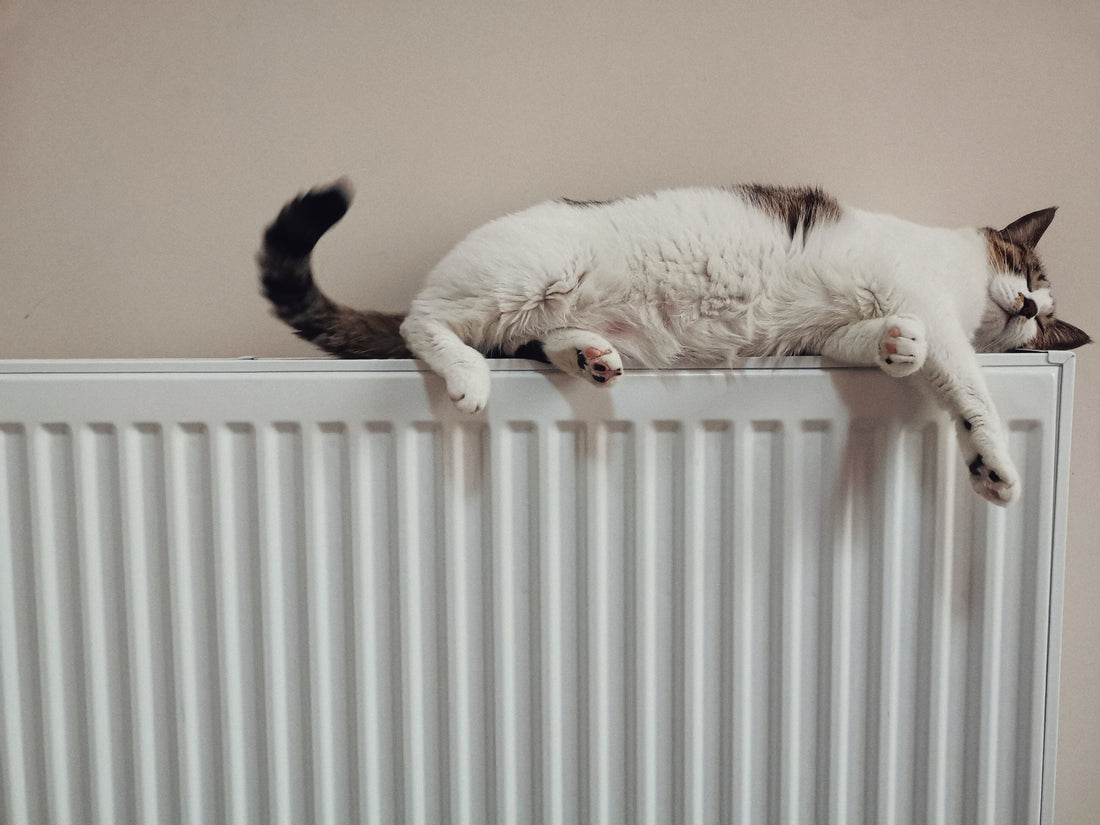
WHAT IS THE BEST TEMPERATURE FOR SLEEP
When it comes to sleep, we all have our to-do lists. Blackout or dim the lights, some reading or some stretching, music or nothing at all; our preferences are set. After all, what matters the most is a comfortable environment that helps you relax.
And more often than not, we forget about a crucial yet highly understated parameter that affects our sleep: the temperature. Read along to learn the relationship between sleep and temperature, the perfect sleep temperature, and how to achieve it.
THE SCIENTIFIC RELATIONSHIP BETWEEN SLEEP & TEMPERATURE
Our natural sleep-wake cycle follows a circadian rhythm or a 24-hour cycle. This rhythm is based on the day and light cycle and is controlled by our brain. Throughout the day, our average, core body temperature ranges from 36.5°C to 37.5°C (97.7°F – 99.5 °F), with the lowest temperature in the morning and the highest temperature in the afternoon.
Gradually, as bedtime approaches, the core temperature starts to drop and reaches its lowest around daybreak. The reduced exposure to light at night-time gives a cue to our brain to prepare our body for sleep by bringing down the core temperature.
Our body follows a natural process to cool down by emitting heat through our skin. Blood vessels dilate, and the flow toward our fingertips and toes increases. This explains why our hands and feet tend to get warmer toward bedtime.

THE IDEAL SLEEPING TEMPERATURE & WHY IT MATTERS
Research has shown that the optimal temperature for quality sleep is between 15.5°C to 19.4°C (60°F to 67°F). A degree or two, as per your comfort, can be adjusted. Having said that, a temperature range beyond 23.8°C and below 12.2°C is not suggested because you might feel too hot or too cold at night.
What happens when the bedroom temperature is too cold?
When we feel too cold at night, our body tries to trap the heat by raising the core temperature. This happens by constricting the blood vessels. Simultaneously, our muscles contract and relax to warm our skin temperature, causing us to shiver. This can lead to disturbed sleep.
What happens when the bedroom temperature is too hot?
Our body maintains a natural core temperature of about 37°C. When we feel hot, our core temperature starts rising. As a response, our body tries to emit excess heat through the skin to cool down. But when we feel too hot, and the core temperature rises to 39°C or 40°C, our muscular activity slows down, and fatigue kicks in, for instance, during sickness or fever.
On average, we sweat about one cup every night and sweating while sleeping is completely normal. But sweating profusely at night can make the bedroom too humid to sleep in. Additionally, if we are wearing the wrong fabrics, it can lead to uncomfortable wetness on our skin
Are you feeling too hot or too cold at night?
Studies show that 40% of people mention being too warm or cold as the most disturbing factor for great sleep. Temperature impacts not only the onset of sleep but also the quality.
Temperature fluctuations affect our deep sleep phase and our REM sleep. As a result, we get a lower quality of sleep and feel sluggish the next day. Moreover, insufficient deep sleep and interrupted REM sleep can affect the body’s processes, such as recovery mechanisms, immune system, and memory.

MAINTAINING THE IDEAL SLEEPING TEMPERATURE
Here are a few tips for maintaining the ideal bedroom temperature for a good night’s sleep:
1. KEEP AN IDEAL BEDROOM TEMPERATUREThe ideal sleeping temperature is around 18°C/64°F or below. During freezing winter, make sure to keep the windows open for some time during the day for air regulation. But close them at night when the temperature starts dropping.
2. TAKE A WARM BATH BEFORE BEDA warm bath an hour or two before bedtime mimics your body’s natural circadian rhythm. The rise and rapid fall in your body temperature will help you sleep faster and longer.
3. WARM UP YOUR FEETIf you have cold feet, warming them up before bed can help you fall asleep faster. You can do this by taking a warm foot bath or wearing sleep socks.
4. USE THE RIGHT FABRICSTemperature-regulating sleepwear enables you to manage the temperature during the night and can help support your body's natural heat regulation without making you feel uncomfortable.
For cold winters, fabrics like flannel and fleece do not support proper air circulation and can cause night sweats. Instead, look for pyjamas that are breathable, skin-friendly, and give you feather-light warmth.
WHY WHAT WE WEAR MATTERS - TEMPERATURE-REGULATING PYJAMAS
To keep the best body temperature for sleep, we must wear suitable clothing at night. These are the four factors to look for:
1. TEMPERATURE REGULATIONBreathable pyjamas help to release excess heat so that we don't overheat or sweat. We also don't want to become too cold as shivering will disturb our sleep quality. Natural material tends to be more breathable than synthetics.
2. MOISTURE MANAGEMENTSweating is natural. But if our sleepwear gets soaked, we may get cold and start to shiver. The sweat-wicking pyjamas allow for evaporative cooling as the moisture is released into the air. Lightweight, natural materials are the best option for a combination of moisture-wicking and evaporative cooling.
3. COMFORTABLE FITWe move over 40 times every night. And sleepwear should aid in movement without disturbing your sleep. Look for a comfortable design. The most comfortable pyjamas should feel like a second skin.
4. SKIN-FRIENDLYDuring sleep, the blood flow in our skin increases, making us more sensitive to touch. Look for flat, ergonomic seams and tagless designs for minimum friction and rubbing at night.
THE DAGSMEJAN DIFFERENCE - MATCHING YOUR INDIVIDUAL PHYSIOLOGICAL SLEEP NEEDS
Dagsmejan’s temperature-regulating pyjamas are scientifically proven to help you sleep better. We combine the finest natural fibers with the latest textile technology in feather-light, breathable, and super-soft sleepwear that will give you the smoothest night comfort ever.
STAY WARM COLLECTION
Feeling cold at night? Don’t worry; we have got you covered! Our thermal pyjamas are made from a blend of merino wool (100% mulesing-free) and eucalyptus, which provides breathable warmth without you overheating.
SHOP WOMEN'S MERINO WOOL PYJAMAS
SHOP MEN'S MERINO WOOL PYJAMAS

BALANCE COLLECTION
We have the perfect pyjamas for you if you are feeling hot and cold at night. Our patented fabric is designed to support your body's thermoregulation while being the most comfortable pyjamas in the world.

STAY COOL COLLECTION
Our innovative, smooth Stay Cool Pyjamas are designed especially for our hot sleepers. The pyjamas have an evaporative cooling effect, thanks to the Eucalyptus fibers, making you feel noticeably cooler and ensuring you get some good rest.
SHOP COOLING PYJAMAS FOR WOMEN

RECOVERY COLLECTION
Can’t sleep because of the sore muscles? The world’s best recovery sleepwear combines cooling Eucalyptus fibers with heat-activated minerals, recycling excess body heat and redirecting it as infrared energy toward your muscles, enhancing muscle regeneration.
SHOP RECOVERY SLEEPWEAR FOR WOMEN
SHOP RECOVERY SLEEPWEAR FOR MEN







